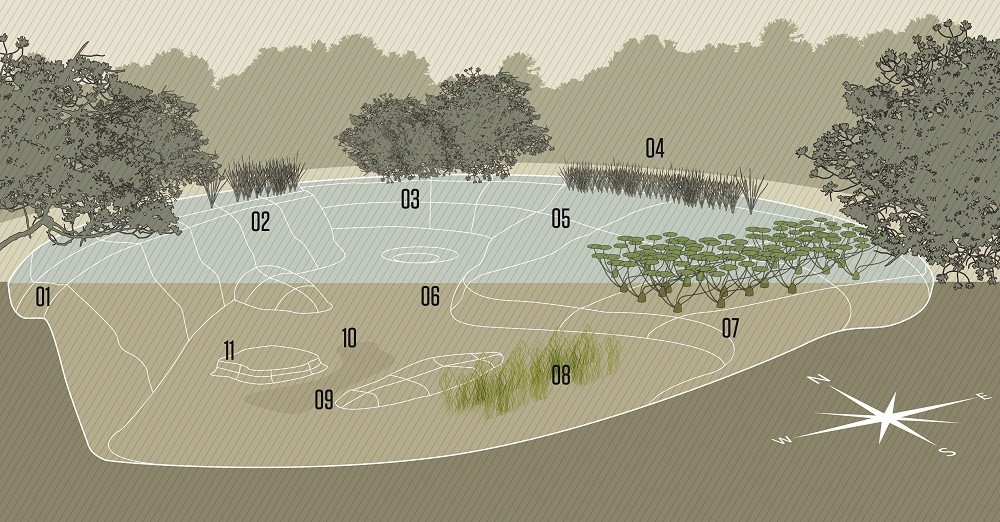
How to read a swim correctly
Poor feature-finding will cost you more than just one of two fish. Learn how to read the swim and where's best to place your hookbaits
1 Margins
The biggest and best feature on most lakes, especially commercial fisheries and the best place to bump into the biggest carp that resides in the venue; often referred to as ‘kerb crawlers’. Stick to a sprinkling of bait and fish for one carp at a time.
2 Windward bank
From April to October carp are often on found on the windward bank in coloured water looking for food. Carp can react fast to changing weather conditions and will move long distances in minutes should the weather dictate a move to them.
3 Undercut banks
Anywhere there is overhanging foliage or brambles you can find undercuts where carp have dug and hollowed out underneath the bank, often sitting out of harm’s way. Look for any marginal plant growth and present baits alongside.
4 Reedbeds
Reedbeds offer both security and a food source so are naturally a haven for carp. When fishing to reeds, look for areas that either point out or jut-back slightly – these will be areas that carp will move past on a more regular basis.
5 Shallows
Anywhere the sun warms water quickly you will find carp. Shallower bays or margins are rich in both natural and angler’s food and depending on when they receive the sun, carp visit at different times of day, so make a note of said areas.
6 Drop-offs
Where the lakebed sharply drops off into deeper water. Like bars and plateaux, these areas of the lake are places the carp will patrol and visit throughout the day.
7 Lilies
A feature on many lakes is marginal lilies, which, like reedbeds, offers sanctuary and feeding opportunities for them. You can fish lilies in a number of ways, from Martin Locke’s Float-Ledgering (P34) to casting solid PVA bags close to them.
8 Weedbeds
Although they can be frightening to fish into or around they offer oxygenation, shelter and natural food and carp will spend weeks, sometimes months frequenting large weedbeds. Fish solid PVA bags or Chod Rigs will ensure you get great presentation.
9 Bars
They’re almost like roadways for carp. They’re long ridges formed by the massive scoops that extract the gravel and often they will lie parallel where the pit has been worked from one end to the other. Key travel routes, navigation points and feeding areas.
10 Silt troughs
A build up of sediment by wind and undertow creates silt deposits behind and between bars, often rich in natural foods like bloodworm and tubifex. These are great areas to place a bait – often far better than on top of a gravel bar.
11 Plateau
This is a large raised, flat area with steep sides – like a carp roundabout if you will. It’s an area where carp will visit on a regular basis and can produce fish at different times of the day: midday in the sun on top, overcast and colder: down the sides.




